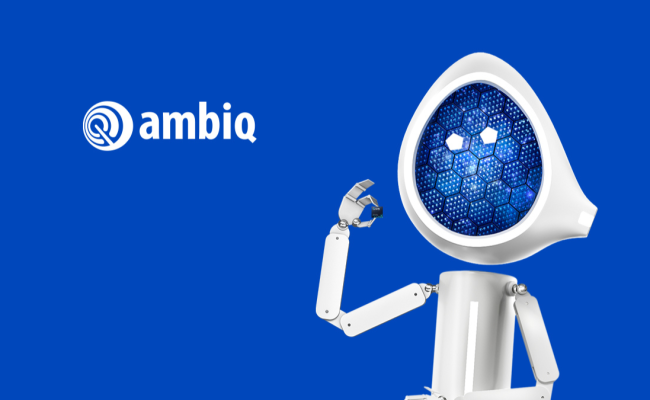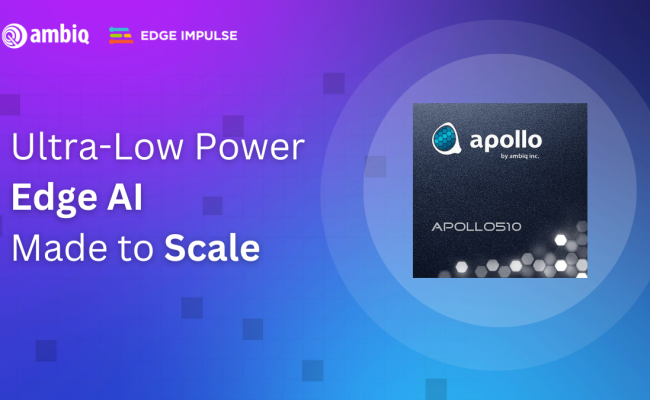Ambiq recognized for pioneering energy-efficient semiconductor solutions that empower next-generation AI-enabled healthcare innovations

San Antonio, TX — June 10, 2025 — Frost & Sullivan is pleased to announce that Ambiq has been awarded the 2025 Global Company of the Year Award in the semiconductor solutions for the healthcare industry for its outstanding achievements in innovation, technology advancement, and customer-centric strategy execution. This recognition highlights Ambiq’s unwavering leadership in developing ultra-low power semiconductor platforms that are transforming digital health solutions and enabling AI-powered diagnostics and monitoring at the edge.
Frost & Sullivan evaluates companies through a rigorous benchmarking process across two core dimensions: strategy effectiveness and strategy execution. Ambiq excelled in both areas, demonstrating its ability to anticipate evolving market needs while consistently delivering cutting-edge products that enhance performance, energy efficiency, and scalability across healthcare and related sectors. “Ambiq’s primary focus lies on delivering energy-efficient solutions with extended battery life. The company is also implementing solutions or models for AI that can enable the expansion of ultra-low power edge AI technologies,” said Utkarsha Soundankar, industry analyst at Frost & Sullivan.
Guided by a forward-looking growth strategy that prioritizes research and development, ecosystem collaboration, and application-specific innovation, Ambiq has successfully positioned itself at the forefront of the semiconductor market. The company’s strategic agility and sustained investment in edge AI and low-power computing have enabled it to scale its technology globally while delivering targeted solutions that meet the demands of modern digital healthcare systems.
Innovation is at the heart of Ambiq’s operational ethos. Its Apollo System-on-Chip (SoC) series, now in its fifth generation, is setting new standards for energy efficiency in smart health devices. The Apollo510 combines an Arm Cortex-M55 CPU with Helium technology, advanced security features like secureSPOT and Arm TrustZone with PUF, and dynamic graphics performance via its 2.5D GPU. The company plans to release variations of both current and next-gen Apollo SoCs to cater to customers of all sizes and their power needs for AI-enabled devices.
“We are honored to be awarded the prestigious Frost & Sullivan award in Healthcare Semiconductor Solutions,” says Fumihide Esaka, CEO of Ambiq. “Since our founding, we have been on a mission to enable intelligence everywhere, a mission that often aligns with our digital health customer’s mission of making healthcare more accessible to everyone. We’re proud to help these healthcare innovators meet this mission in making effective patient care more efficient, available, and less costly using our ultra-low power semiconductors and solutions.”
In addition to its Apollo series, Ambiq’s suite of technologies—powered by its patented Sub-threshold Power Optimized Technology (SPOT®) platform—includes the Artasie real-time clocks for power optimization, the neuralSPOT AI development kit, and heartKIT®, which enables accurate AI-driven ECG monitoring. These innovations collectively extend device battery life while supporting always-on, intelligent applications across wearables, diagnostic tools, and connected medical devices.
Ambiq’s unwavering commitment to customer success further strengthens its position as a partner of choice in the healthcare semiconductor space. By maintaining close collaboration with device manufacturers and solution providers, Ambiq accelerates time-to-market for new products and ensures that partners receive the technical and operational support needed for long-term success. Its partnerships with companies like CardioMedive, Smartaly, and Bravechip underscore its ability to deliver reliable, high-performance, and energy-efficient chipsets that address real-world challenges in cardiovascular monitoring, wearable diagnostics, and IoT integration.
Frost & Sullivan commends Ambiq for setting a high standard in competitive strategy, execution, and market responsiveness. The company’s vision, robust innovation pipeline, and customer-first culture are shaping the future of semiconductor technologies for healthcare and unlocking new possibilities for edge AI and intelligent diagnostics worldwide.
Each year, Frost & Sullivan presents the Company of the Year Award to a company that demonstrates outstanding strategy development and implementation, resulting in measurable improvements in market share, customer satisfaction, and competitive positioning. The award recognizes forward-thinking organizations that are reshaping their industries through innovation and growth excellence.
Frost & Sullivan Best Practices awards recognize companies in various regional and global markets for demonstrating outstanding achievement and superior performance in leadership, technological innovation, customer service, and strategic product development. Industry analysts compare market participants and measure performance through in-depth interviews, analyses, and extensive secondary research to identify best practices in the industry.
To learn more about why Ambiq was chosen as Frost & Sullivan’s Company of the Year for Healthcare Semiconductor Solutions, read the complete evaluation report here.
About Frost & Sullivan
For six decades, Frost & Sullivan has been world-renowned for its role in helping investors, corporate leaders, and governments navigate economic changes and identify disruptive technologies, megatrends, new business models, and companies to action, resulting in a continuous flow of growth opportunities to drive future success.
About Ambiq
Our mission is to enable intelligence (artificial intelligence (AI) and beyond) everywhere by delivering the lowest power semiconductor solutions. We enable our customers to deliver artificial intelligence compute at the edge where power consumption challenges are the most profound. Our technology innovations, built on the patented and proprietary sub-threshold power optimized technology (SPOT), fundamentally deliver a multi-fold improvement in power consumption over traditional semiconductor designs. We’ve powered over 270 million devices today. For more information, visit www.ambiq.com.
Contact
Charlene Wan
VP of Marketing and Investor Relations
cwan@ambiq.com
+1.512.879.2850
Read Article in: Japanese | Simplified Chinese | Traditional Chinese


